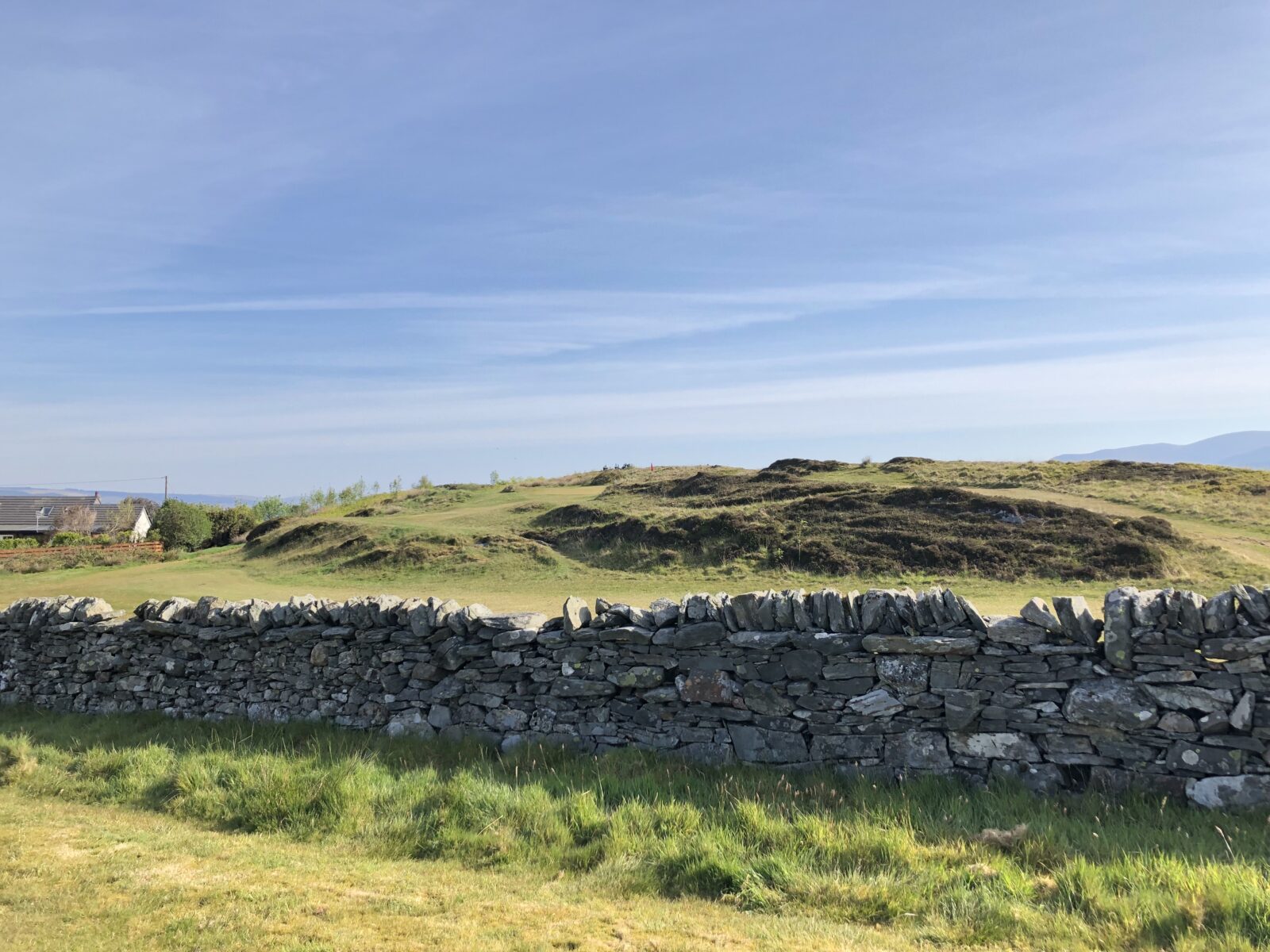On the Kilbrannan Sound, a Perfect Introduction to Golf in Kintyre
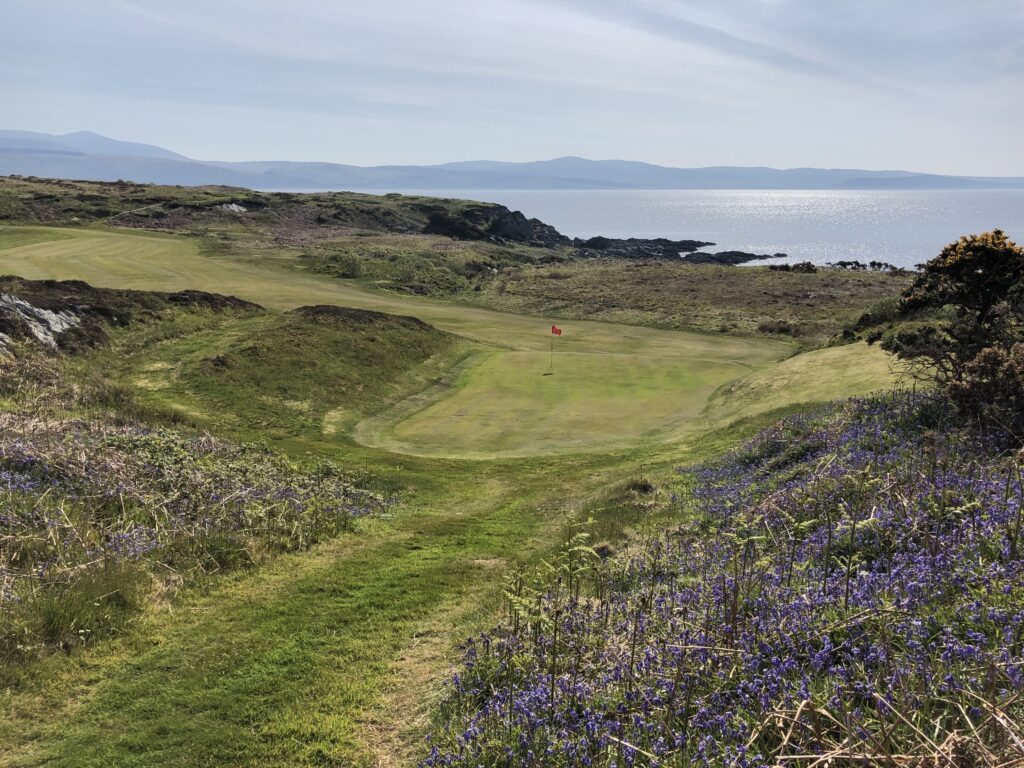
“We get an odd one misusing the honesty box, rarely, but right enough, we usually get them.” – Robert Strang, Carradale Greenskeeper in Hell’s Golfer by Tom Morton
The drive from Covesea to Campbeltown, located near the end of the Kintyre Peninsula, takes you through the stunning landscape of the Scottish Highlands. Take your time and enjoy the journey. It is a long drive. There is so much natural beauty to absorb in the Highlands that it can be overwhelming to the visitor at times. In the words of the great poet Bob Dylan (with a nod to Robert Burns):
Well, my heart’s in The Highlands at the break of day
Over the hills and far away
There’s a way to get there, and I’ll figure it out somehow
Well, I’m already there in my mind and that’s good enough for now
I suggest stopping Fort Augustus or Fort William for a night to break up the drive. Take a walk around town and find a pub or restaurant to spend a few hours in. You really cannot go wrong on your choice of routes.

Driving in Scotland, especially for Americans, can often be a challenge. While most of the roads are now as good (or better) as those that we have in the USA, once you get south of Lochgilphead the driving can get interesting. It’s easy to look at a map of Kintyre and think, “Oh, we can get there in 20 minutes. It’s only 15 miles.” It will likely take twice as long to make the trip as you assume it will. The 16-mile drive from the wonderful Ardshiel Hotel in Campbeltown (our base for this part of the trip) to Carradale Golf Club on the B842 is one of the most harrowing, and beautiful, in Scotland. You will drive past the holy island of Davaar – accessible from Campbeltown by a natural causeway at low tide. Although the B842 is classified as a “partial” dual carriageway road, that is perhaps a slight exaggeration of the truth. For the most part, it seems wide enough for only a single car. Blind curves often appear out of nowhere. This is not meant to discourage you from making the trip to Carradale, just be prepared to drive carefully and with caution – and look out for motorcycles traveling at the speed of sound.
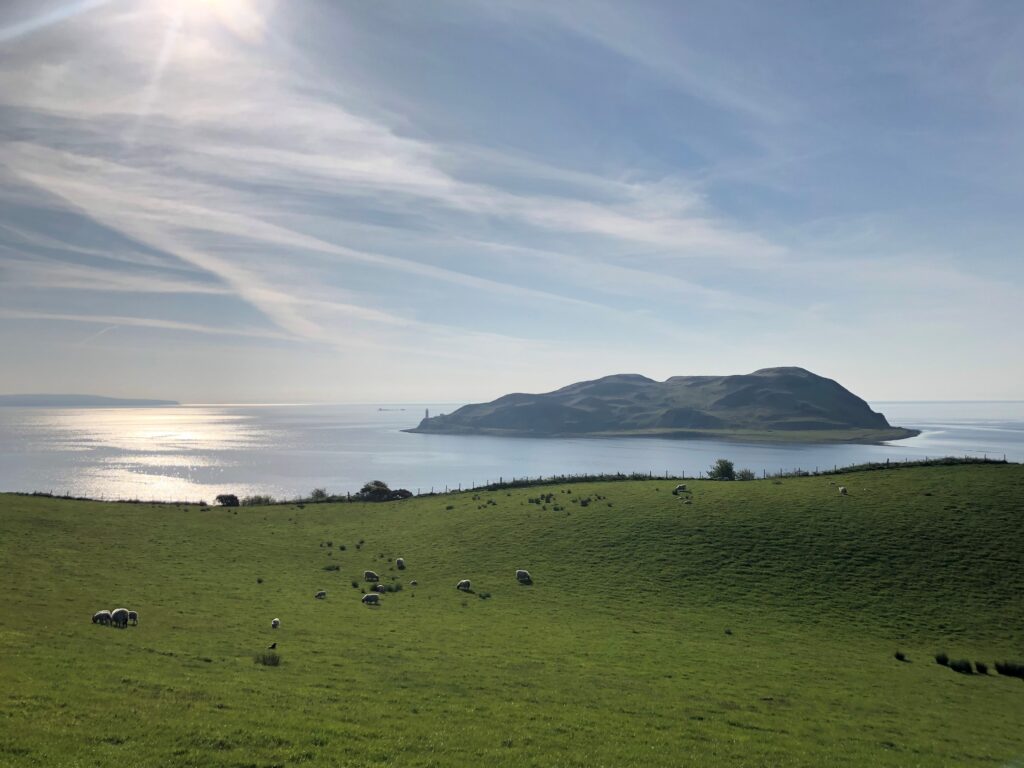
I had corresponded with Rhona Elder, the Club Secretary, prior to our visit to Carradale. She had been very accommodating, as our plans had changed a few times as we progressed around Scotland. Ms. Elder greeted us warmly in the small gravel car park – telling us we had the course to ourselves at the moment – other than longtime greenskeeper Robert Strang, who was out working on the course. The welcome that is afforded to visitors at places like Carradale never ceases to amaze me. The Club Secretary granted us, mere American visitors, the unexpected privilege of playing from the medal tees. This is an honor that I did not take lightly. We were soon to find out that there are some all-world medal tees at Carradale. “Off you go,“ she said, leaving us with the advice to talk to Robert if we had any questions about the course.
If you have been following this series, it is probably obvious that I have a special affection for nine-hole golf courses. When there are nine good holes, like at Carradale, there is an excitement and anticipation for getting a second (or even third) shot at them as the day progresses. Scotland has the greatest collection of nine hole courses in the world and there is not a close second. There is not a bad hole at Carradale. They range from good to great. The club was officially founded in 1906 and, like its Kintyre neighbor Dunaverty, is thought to have been laid out by the founding members. In my experience, the ancient Member-Designers of the Kintyre Peninsula were simply brilliant.
The 1st hole is a blind, uphill, 162-yard par 3. Following the theme of many headland courses, such as Anstruther and The Glen in North Berwick, the walk from the first tee to the green serves to get you to the heights on which the majority of the course is situated. It is an exciting way to start the round, with the inherent sense of anticipation that a blind shot affords. Once the hill has been scaled, one of the great views in Scottish golf is the reward.

We were greeted by Robert, sitting on his mower, between the 1st green and 2nd tee. You could sense his pride in the condition of the course, which was excellent this spring. There is no better golf playing surface than the seaside turf of Scotland. Robert Strang is obviously a master of the greenkeeping art, having been Carradale’s sole caretaker for at least thirty years. Without knowing for sure, something tells me he does his job the same way that it has been done in Scotland since the early 1900’s, with the exception of gas-powered lawn mowers.
Ken Brown, the great Scottish five times European Ryder Cup player, discovered Carradale while on holiday in the area in May of 2019, just a few days before our visit.
“Our cottage was only fifty yards from the 3rd tee, so naturally I went to investigate, and I loved what I saw! I bumped into Robert the head greenskeeper and enjoyed chatting with him about how he maintained the course,” Brown recalls.
Robert confirmed to me that Mr. Brown was very complimentary of the course and the conditions during his visit. Those were much simpler times in 2019, in the days before Covid changed the world.
From the 2nd tee, the entire world of Carradale is revealed. In the distance lies the Isle of Arran, a vastly underrated golf mecca, accessible by ferry from just up the road in Claonaig. Although golf is played with haste in Scotland, you can be forgiven for pausing to look in the direction of Blackwaterfoot, the home of the mythical Shiskine Golf and Tennis Club. This tee is one of the greatest spots in the world of golf. The 2nd hole itself, Kilbrannan, is a downhill, 341-yard par four with the approach played back uphill over an old stone wall. It is one of my favorite green sites in Scotland. It’s one of the best holes I’ve ever played.
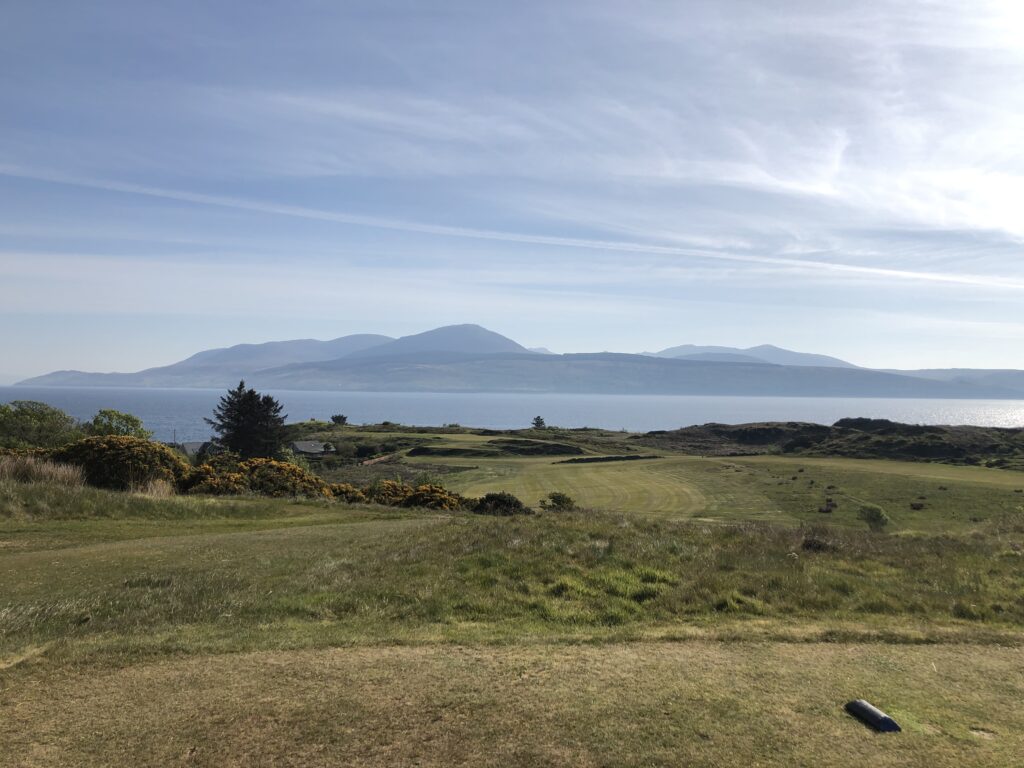
There is never really a letdown after the brilliant 2nd. The 3rd hole is another completely blind 233-yard par 3, played over the ruins of the medieval Airds Castle. This tee shot can be a bit disorienting the first time around. Like a lot of holes in Scotland, once you reach the green and look back towards the tee – the correct line of play becomes obvious. The medal tee on the 4th hole is spectacular. (with thanks again to Ms. Elder and the Greens Committee) It is located a good 30-40 yards behind the Members tee, accessed by a lovely walk through gorse and native plants. The par four hole plays 276 yards, downhill off the tee – and then back up steeply to another brilliant elevated green site. It was straight into the wind on this day and played much more like 430 yards. I may have mentioned that yardage and par are often irrelevant in Scotland.

The 5th continues the theme of stunning par fours. Running back downhill at 286 yards, directly opposite of the 4th, the wind now carries our drives an unimaginable distance. While it is sorely tempting to go for the green, the green is cut into the hill in such a way that it would be a mistake to do so. The smart play is to hit a mid-iron off the tee and then attempt a delicate pitch to the small, devious green. Birdie is a possibility, but bogey is just as likely. The routing of the nine holes at Carradale is simply brilliant.
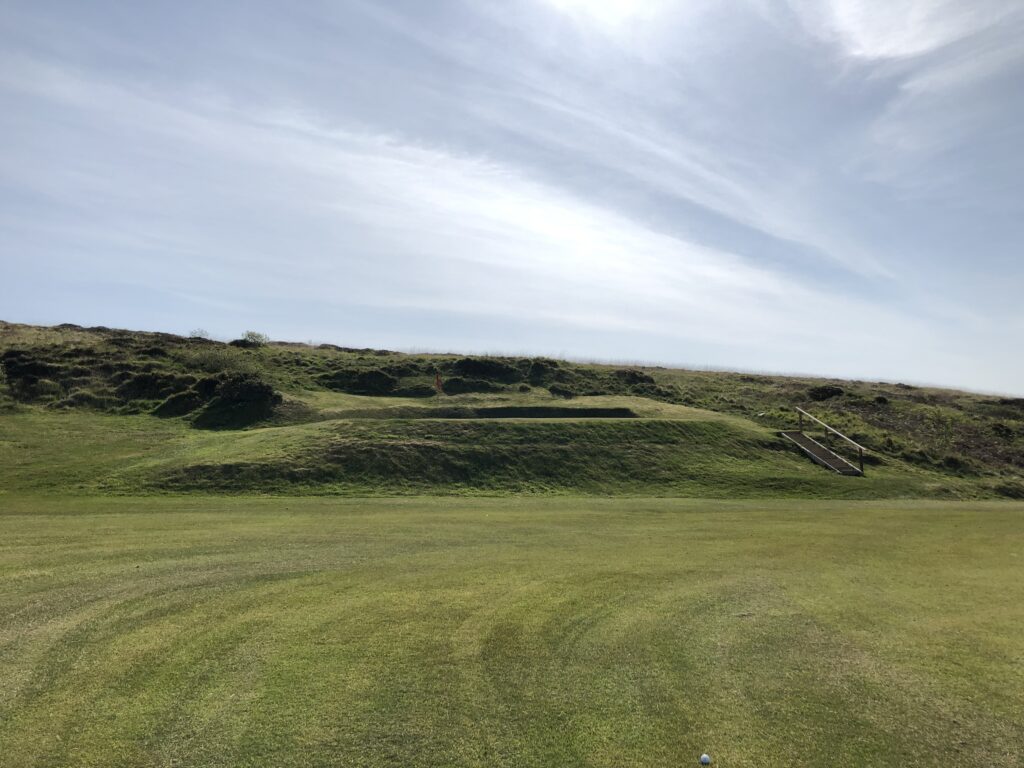
At the risk of slipping into hyperbole, the 6th hole, Pudding Bowl, is just as great as its predecessors. From the medal tee, the drive is played over a rocky corner of Carradale Bay to a pleasantly curving fairway. Once again, even the hasty Scots will forgive you for stopping for a moment to take in this scene. The green is in a natural punch bowl, thus the name. It is Ken Brown’s favorite hole on the course. The well-traveled and successful European Tour professional recalls: “The tee box was elevated and the views it gave you of the hole and the sea behind you were just incredible. My favorite part of the hole was how the small green was set into the side of the hill and how that affected your strategy off the tee.”
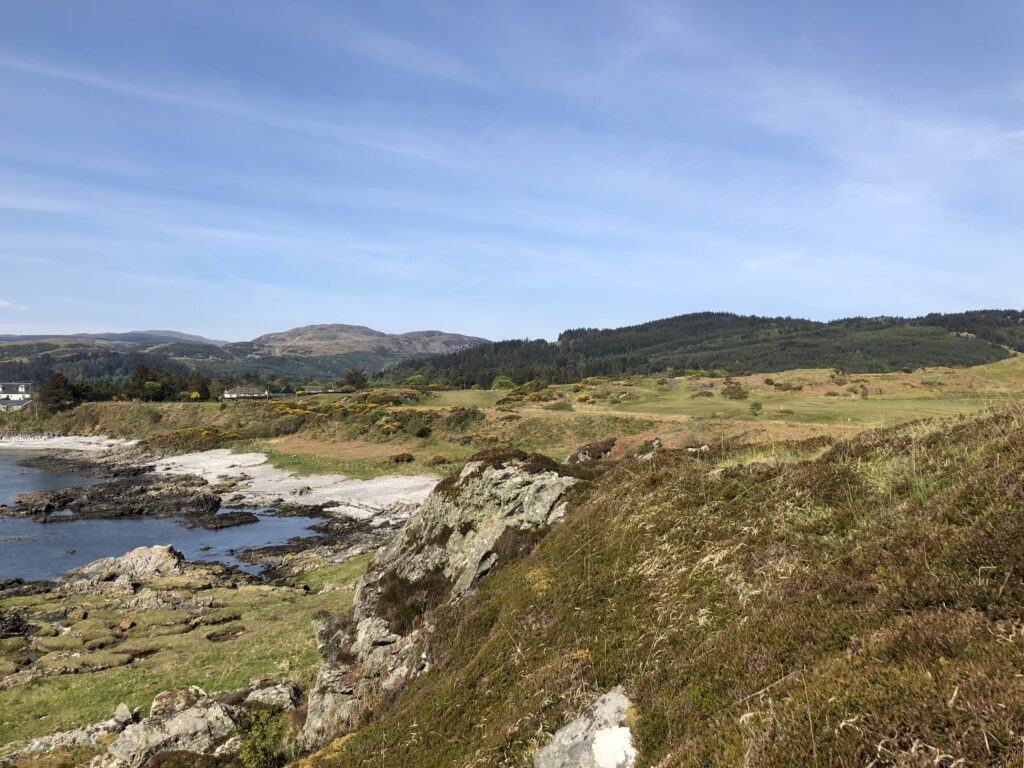
The 4th, 5th and 6th at Carradale are among the most enjoyable consecutive par fours that you will ever play. When you add the 2nd hole to that group, it is one of the best collections of short par fours on any course in the world. They are that good.
The 7th is a semi-blind downhill 186-yard par three that plays straight out to Kilbrannan Sound. It is called Port Righ, after the small community on the edge of Carradale, sitting adjacent to the green. This is a beautiful and testing hole with yet another perfect green site.

After the glories of the 7th, we turn towards home for the final two holes. The par three 8th hole plays uphill and is a thorough examination at 209 yards, especially into the wind. You will be happy with par, but more than likely a bogey will defeat your opponent in any match. The 9th, Airds, is yet another fun, short par 4. It is a mere 293 yards from the Medal tees, but there is an out of bounds wall all the way down the left. Into a strong wind, the tee shot will challenge the best of us. I imagine that in years past, golfers climbed the old stone wall and played from the adjacent field, or at the very least retrieved their errant tee shots. The old wooden ship’s ladder once used to climb over the wall no longer appears to be a viable option. A good drive will leave you with a running pitch and perhaps a closing birdie. You will walk off this course with a smile on your face. Par is a strict 32 at Carradale Golf Club.
After putting out on our final hole, Jake and I removed our hats, shook hands, and walked over to the small car park to load our clubs. There was only one other vehicle there, with a friendly-looking elderly lady standing next to it. She greeted us immediately, somehow seeming to know that two Americans had come out to Carradale to play for the first time. “How did you find the course?” she asked with a smile on her face. “Brilliant, we loved it. Just beautiful,” I replied. “Aye. It’s lovely, isn’t it? My husband and I have been coming here for forty years. We are members at Glasgow Gailes, but this is our favorite place to play,” she continued. We had a pleasant chat about where to stop for a pint and sandwich, with her final recommendation being a small pub/restaurant that we had passed on the way in earlier called The Glen.
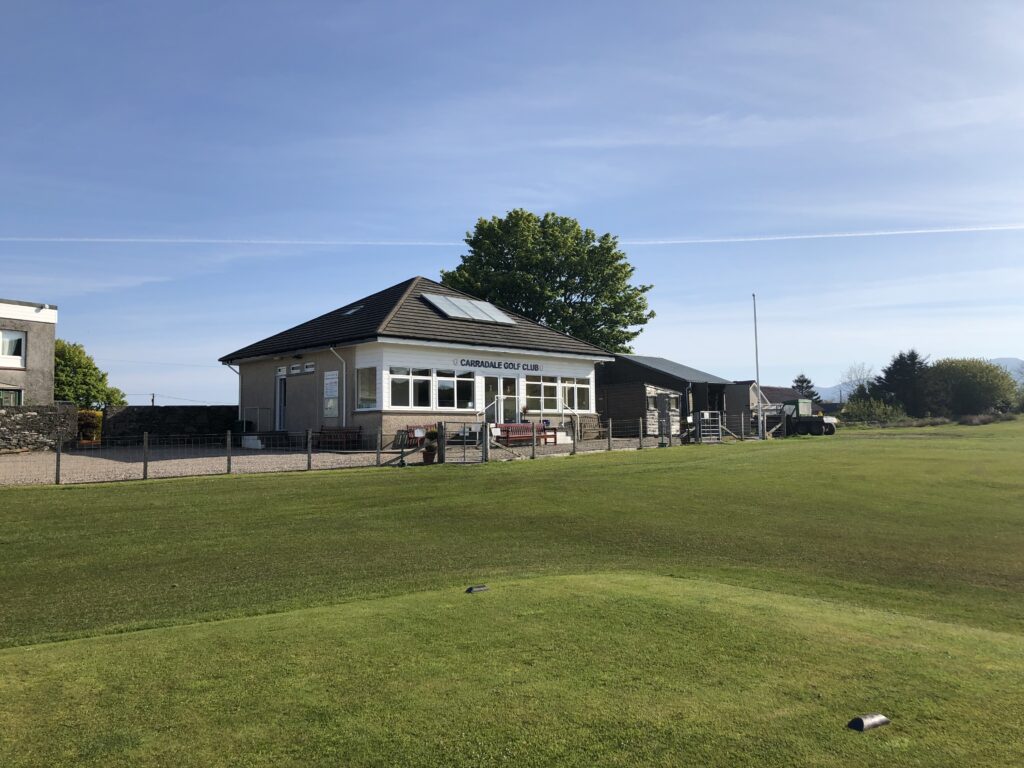
It was around 2 pm when we reached the pub, so we were a little late for the lunch crowd. The place was empty. The owner greeted us warmly, told us to sit anywhere, and brought over the two pints of Tennent’s we had requested. We each ordered leek soup and a chicken panini. The conversation centered on a recollection of every hole at Carradale, in minute detail. This is the surest sign of a great golf course.
As we finished our pints, (a second one for the non-driver) the friendly owner brought us our check. We were in no hurry, so I struck up a conversation. This may be the greatest joy of Scottish travel.
“You’ve got quite a nice spot here,’ I said to the restaurant owner. He smiled knowingly.
“This wee place? Aye. I sold everything and moved here a few years ago. Best decision I ever made. There is a nice pace to life here in Carradale.”
We all have had a dream like this at one point or another – to sell everything and run a small restaurant on the Scottish coast. This man had actually made it happen.
Carradale is not as well known as it’s more famous neighbors, Machrihanish and Dunaverty. Golfers traveling down the Kintyre Peninsula to play this famous duo may not want to take the time to detour along the B842. The time should be taken. Carradale is a worthy addition to your itinerary – beautiful, fun and welcoming to visitors. At the cost of 25 GBP for a day ticket, it is also one of the best values in golf.

RECOMMENDATIONS
If your schedule allows, visit the beautiful town of Oban, before you head due south to Argyll. It is the main ferry terminal for the west coast and a perfect seaside town, with many brilliant seafood restaurants. I will cover it more in my next book, When Revelation Comes. Oban is one of my favorite places in Scotland.
The Glen Restaurant at Carradale is a perfect spot. The food and service are excellent. We could have sat in the small cafe’ and talked for hours.
The Ardshiel Hotel is a good base for exploring the Campbeltown area. It has a nice restaurant and the best whisky bar in Scotland, in my experience. You can walk to almost anywhere in Campbeltown from the hotel. I will have additional recommendations for the Campbeltown area as the series progresses.
